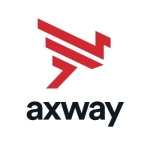What is most valuable?
The key features that you would expect from the solution are:
- The communications and the protocols: The communication is very critical for any B2B product, especially for EDI commerce activities.
- The protocols and standards that are supported.
- The transformation leg, which is the transaction confirmation.
- The business process orchestration around the inbound and outbound transactions.
In this particular space, Sterling B2B Integrator has been the number one solution in the marketplace.
When you go across the country, you see this solution the majority of the time. You don't even have to think about it. That's how dominant that product is. This is what used to be called Gentran. It started off on the mainframe and now it is running on almost all the platforms.
Of course, there are a couple of competitors in the marketplace. However, when it comes to stability, performance, standards, and the breadth of the support in various countries, this is an awesome solution.
How has it helped my organization?
The benefits are in terms of the two most critical sides of the business: the buy side and the sell side.
This has become the de facto standard. It helps in the supply chain optimization problems. There are still a lot of customers who still are using paper-based transaction processing. Some still are using faxes, but this is the way to go.
Even though API management has become so popular, corporate businesses are still going on API.
Visibility is really a cool thing. There's a built-in Sterling Control Center, which provides great visibility for all the different things.
It's not only about visibility. It's about acting on an alert or acting on a critical situation that might be failing.
For example, if I have some SLAs and if I'm not going to meet them, I want to be alerted ahead of time, not after the fact. That's one of the good capabilities that this product has.
What needs improvement?
There have been a couple of issues that we have raised in terms of scalability and high availability. IBM has responded back with the next-generation product and new features like the global mailbox and a couple of other things, which are pretty cool. We would like to use the same product without having to go for the add-on products.
What do I think about the stability of the solution?
This product has been in the marketplace for such a long time. The current version, 5.24, has been very stable for the last year and a half. The 5.26 version is a very simple upgrade.
What do I think about the scalability of the solution?
It is pretty scalable and stable. Scalability and stability are both perfect, spot on.
How are customer service and technical support?
There are times when we call IBM support, especially for the new releases. They are pretty good at responding. It's all about how you interact with them, and how quickly can you provide all the details about your product, your version, and the log files.
A lot of times, customers have issues.
Customer: "I have a problem."
Technical support: "What is the problem?"
Customer: "This is my problem. My translation is not happening."
Technical support: "What version?"
There is this constant dialogue that is going back and forth. If the customer can provide all that information in one shot as technical support is logging the ticket, then that will speed it up and you can get a resolution quickly.
The other challenge is that customers say that the problem is mission-critical, but they don't have the person available to address the issue. The customer has to make sure that there is somebody to receive and handle the call so they can get a resolution within 24 hours.
Which solution did I use previously and why did I switch?
The previous solutions had challenges. A lot of the customers came to us saying they wanted a new standard and what they had was failing. They said, "We need a better platform and we need something which has lots of enterprise trust."
Which other solutions did I evaluate?
We evaluated Microsoft and OpenText. Sterling is the best.
When selecting a vendor, I look for company stability, the product, and the depth of experience. Those are the things that really matter.
Disclosure: My company does not have a business relationship with this vendor other than being a customer.










